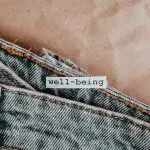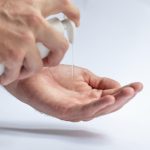Wondering if super glue can truly be removed from fabric? You're not alone. Picture this: you accidentally spill super glue on your favorite shirt, and panic sets in. But fear not, because with the right knowledge and techniques, removing super glue from fabric is indeed possible.
In this guide, we'll delve into the intricacies of super glue and fabric interaction, assess the type of fabric and extent of damage, and walk you through the precautions and step-by-step methods for safe removal. By the end, you'll be equipped with the mastery to tackle this issue like a pro.
So, let's dive in and unravel the mystery of removing super glue from fabric!
Key Takeaways
- Super glue forms a strong bond with moisture in fabric fibers.
- Different fabrics react differently to super glue.
- Carefully consider the fabric type and extent of super glue damage before attempting removal.
- Test safe removal methods such as acetone, heat, natural oils, or commercial adhesive removers, and choose the most suitable method based on the fabric's reaction.
Understanding Super Glue and Fabric Interaction
You can't simply pull super glue off fabric; it's absorbed deep within the fibers, making removal challenging. To understand this, it's crucial to delve into the chemical composition of super glue.
Super glue, also known as cyanoacrylate adhesive, forms a strong bond when it comes into contact with moisture, such as that found in fabric fibers. The adhesive's fast-acting nature and ability to bond with a variety of materials make it a go-to for quick fixes, but this also means it can easily adhere to fabric.
When it comes to fabric compatibility, it's important to consider the specific type of fabric and its porosity. Natural fibers like cotton and wool tend to absorb super glue more readily than synthetic fibers due to their porous nature. The chemical composition of the glue allows it to seep into the tiny spaces within the fabric, creating a strong bond that's difficult to break.
Understanding this interaction between super glue and fabric is essential for developing effective removal methods.
Assessing Fabric Type and Super Glue Damage
Assessing the type of fabric and the extent of super glue damage can provide valuable insight into the best removal approach. Understanding the fabric compatibility and how deeply the super glue has penetrated the fibers are crucial in determining the most effective removal method. Here are some key factors to consider when assessing fabric type and super glue damage:
- Fabric Type: Different fabrics react differently to super glue. Assess whether the fabric is natural (cotton, wool, silk) or synthetic (polyester, nylon, acrylic) as this will impact the removal approach.
- Extent of Damage: Evaluate the area and depth of the super glue damage. Is it a small spot or has the glue spread over a larger area? Has the glue only adhered to the surface or has it penetrated deeply into the fabric?
- Glue Penetration: Understanding how deeply the super glue has penetrated the fabric will help determine the removal approach. Surface-level penetration may be easier to address compared to deep penetration.
- Fabric Sensitivity: Consider the delicacy of the fabric and how it might react to different removal methods. Some fabrics may be more sensitive to certain chemicals or mechanical actions.
Assessing these factors will guide you in choosing the most suitable method to effectively remove super glue from the fabric without causing further damage.
Precautions Before Attempting Removal
Before attempting removal, it's important to carefully consider the fabric type and the extent of super glue damage to minimize the risk of further harm. Different fabrics react differently to removal methods, and a thorough assessment will help determine the best approach.
Additionally, evaluating the extent of the super glue damage will allow you to gauge whether the fabric can withstand removal procedures without causing irreversible harm.
Before diving into removal techniques, it's crucial to consider pre-treatment options. Some fabrics may benefit from pre-treating the affected area with a solvent or adhesive remover to soften the glue, making it easier to remove without causing additional damage. However, it's essential to test any pre-treatment solution on a small, inconspicuous area of the fabric to ensure it doesn't cause discoloration or further damage.
Furthermore, it's important to recognize when professional help may be necessary. If the fabric is delicate, valuable, or the super glue damage is extensive, seeking the expertise of a professional cleaner or tailor could prevent accidental damage during removal attempts. Professional help can provide specialized techniques and equipment to effectively tackle the super glue while minimizing the risk of ruining the fabric.
Testing Safe Removal Methods
To effectively test safe removal methods for super glue on fabric, start by applying a small amount of acetone to an inconspicuous area to assess its impact on the material. This will help you determine whether the fabric can tolerate the chemical solvent without causing damage. After conducting this initial test, you can then proceed with the most suitable method for removing the super glue.
Here are some safe removal methods to consider:
- Chemical Solvents: Acetone and nail polish remover can effectively dissolve super glue without damaging the fabric. Apply a small amount to a hidden area and observe the fabric's reaction before proceeding.
- Heat Application: Using a hairdryer or warm iron, apply heat to the affected area to soften the super glue. Once softened, gently scrape off the glue with a blunt tool, being careful not to damage the fabric.
- Natural Oils: Certain natural oils, such as coconut or olive oil, can help break down super glue. Apply the oil to the affected area and let it sit for a few minutes before gently rubbing and peeling off the glue.
- Commercial Adhesive Removers: There are specialized adhesive removers available that are safe for fabrics. Follow the manufacturer's instructions and test on a small area first to ensure compatibility.
Step-by-Step Guide for Removing Super Glue
Once you have determined the most suitable method for removing the super glue from fabric, you can begin the step-by-step process to effectively eliminate the adhesive without causing damage. It's crucial to approach this task with care to ensure fabric protection and restoration. Follow this step-by-step guide to safely remove super glue from fabric:
| Steps | Instructions |
|---|---|
| 1. Test in inconspicuous area | Before starting, test the chosen method on a small, hidden area of the fabric to ensure it won't cause discoloration or damage. |
| 2. Scrape off excess glue | Use a blunt knife or spoon to gently scrape off as much of the dried glue as possible without damaging the fabric fibers. |
| 3. Apply acetone or nail polish remover | Moisten a cotton ball with acetone or nail polish remover and dab it onto the affected area. Allow it to sit for a few minutes to soften the glue. |
| 4. Gently remove softened glue | Using a clean cloth, gently dab and lift the softened glue. Avoid rubbing, as this can spread the glue and damage the fabric. |
| 5. Wash and dry the fabric | Launder the fabric as usual, then air dry it to ensure all traces of the adhesive are removed. |
| 6. Check for residue | Inspect the fabric for any remaining glue residue and repeat the process if necessary. |
Post-Removal Care for Fabric
After removing super glue from fabric, you should carefully inspect the fabric for any remaining residue and address it promptly to ensure complete restoration. Here are some essential steps to take for post-removal care of your fabric:
- Gentle Cleaning: Use a mild detergent and lukewarm water to gently dab at the affected area, taking care not to spread the residue further. Avoid rubbing vigorously, as this may cause the glue to set deeper into the fabric fibers.
- Air Drying: After cleaning, allow the fabric to air dry completely. Avoid using heat, as it may cause any remaining glue to harden and become more difficult to remove.
- Consulting Professionals: If the fabric is delicate or if the super glue residue persists, it's advisable to seek professional cleaning services. Professional cleaners have the expertise and specialized products to effectively remove stubborn residues without causing damage to the fabric.
- Post-Cleaning Inspection: Once the fabric has been cleaned, inspect it again to ensure that all traces of the super glue have been successfully removed. If any residue remains, consider consulting a professional cleaner for further assistance in fabric restoration.
Taking these steps will help ensure that your fabric is effectively restored after the removal of super glue, and professional cleaning can be sought if necessary.
Frequently Asked Questions
Can Super Glue Stain Be Removed From Delicate Fabrics Like Silk or Satin?
To remove super glue from delicate fabrics like silk or satin without causing damage and preserving the original texture and color, try home remedies such as acetone or nail polish remover. Gently dab the affected area for best results.
Will Using a Certain Removal Method Cause the Fabric to Lose Its Original Color or Texture?
When removing super glue from fabric, take precautionary measures to preserve the original color and texture. Utilize fabric preservation techniques such as testing removal methods on a small, inconspicuous area before proceeding to avoid any potential damage.
Can Super Glue Be Removed From Fabric Without Causing Damage to the Surrounding Area?
Yes, super glue can be removed from fabric without causing damage to the surrounding area. Fabric protection and prevention are key. Seek professional removal and restoration to ensure the original color and texture are preserved.
Are There Any Home Remedies That Can Effectively Remove Super Glue From Fabric?
You can effectively remove super glue from fabric using home remedies. There are fabric-friendly solutions like acetone, nail polish remover, and hydrogen peroxide that can help dissolve and lift the glue without causing damage.
Is It Possible to Completely Remove Super Glue From Fabric or Will There Always Be a Trace of It Left Behind?
Yes, it's possible to completely remove super glue from fabric. A chemical solvent can break down the adhesive, and heat treatment can soften it for easier removal. However, it's important to test these methods in an inconspicuous area first.
- How Is Polycotton Made? From Raw Fibers to Finished Fabric - June 23, 2025
- Does Polycotton Have Stretch? What to Expect From This Fabric - June 23, 2025
- Does Polycotton Fray? Tips for Sewing and Finishing Edges - June 23, 2025







